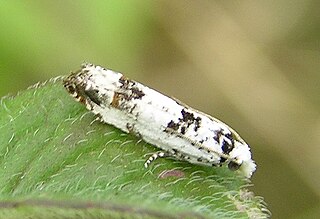
The Second Sino-Japanese War was a military conflict fought primarily between the Republic of China and the Empire of Japan from July 7, 1937, to September 2, 1945. It began with the Marco Polo Bridge Incident in 1937 in which a dispute between Japanese and Chinese troops escalated into a battle.

The silkworm is the larva or caterpillar of the domestic silkmoth, Bombyx mori. It is an economically important insect, being a primary producer of silk. A silkworm's preferred food is white mulberry leaves, though they may eat other mulberry species and even osage orange. Domestic silkmoths are closely dependent on humans for reproduction, as a result of millennia of selective breeding. Wild silkmoths are different from their domestic cousins as they have not been selectively bred; they are not as commercially viable in the production of silk.

Hornbeams are hardwood trees in the flowering plant genus Carpinus in the birch family Betulaceae. The 30–40 species occur across much of the temperate regions of the Northern Hemisphere.

The Insect-class gunboats were a class of small, but well-armed Royal Navy ships designed for use in shallow rivers or inshore. They were intended for use on the Danube against Austria-Hungary. The first four ships—Gnat, Mantis, Moth and Tarantula—were first employed during the World War I Mesopotamian Campaign on the Euphrates and Tigris rivers.

The Japanese house bat or Japanese pipistrelle is a species of vesper bat. An adult has a body length of 3.6–4.8 cm (1.4–1.9 in), a tail of 2.9–4.0 cm (1.1–1.6 in), and a wing length of 3.2–3.6 cm (1.3–1.4 in). It prefers to roost under the ceiling or inside the roof of old buildings. It is found across East Asia, from China and Taiwan into the Ussuri region, the Korean Peninsula, and Japan.

John Henry Leech was an English entomologist who specialised in Lepidoptera and Coleoptera.

Abraxas sylvata, the clouded magpie, is a moth of the family Geometridae that was named by Giovanni Antonio Scopoli in 1763.

Ptycholoma lecheana, the Leche's twist moth, is a moth of the family Tortricidae. It is found in Europe, China, Korea, Japan, Russia and Asia Minor.

Pseudargyrotoza conwagana is a moth of the family Tortricidae. It is found in Europe, China, South Korea, Japan, Russia and Asia Minor.

Eupoecilia ambiguella, the vine moth, is a moth of the family Tortricidae. It is found in Europe, China, India, Japan, Korea, Mongolia and the Russian Far East.

Eucosma campoliliana is a moth of the family Tortricidae. It is found in Europe, China, Japan and Russia.

Nymphula nitidulata, the beautiful china-mark, is a species of moth of the family Crambidae described by Johann Siegfried Hufnagel in 1767. It is found in Europe, Japan (Hokkaido), Turkey, Armenia, Russia and China.

HMS Moth was an Insect-class gunboat of the Royal Navy. Entering service in 1916, Moth had a varied career with service in the Middle East, the White Sea and the Far East in two world wars. Scuttled in World War II during the invasion of Hong Kong, the ship was raised and put into service by the Imperial Japanese Navy as Suma (須磨). The ship remained active throughout the war, before striking a naval mine in the Yangtze River in 1945 and sinking.

Spilonota ocellana, the bud moth, is a moth of the family Tortricidae. It is found in the Palearctic ecozone. It is also present on Madeira and in North America.

Sabra harpagula, the scarce hook-tip, is a moth of the family Drepanidae first described by Eugenius Johann Christoph Esper in 1786. It is found from Europe through temperate Asia to Japan.

Tetheella is a monotypic moth genus in the family Drepanidae described by Werny in 1966. Its single species, Tetheella fluctuosa, the satin lutestring, was described by Jacob Hübner in 1803. It is found from western Europe to Kamchatka, Sakhalin Island, Korea and Japan.

Gluphisia crenata, the dusky marbled brown, is a moth of the family Notodontidae. It is found in Europe, east over parts of Russia and China up to Japan. It is also found in North America, where it was traditionally treated as a separate species, Gluphisia septentrionis.

Epinotia tenerana, the nut bud moth or alder tortricid, is a moth of the Tortricidae family.
Rhyacionia duplana, the summer shoot moth or Elgin shoot moth when referring to subspecies logaea, is a moth of the family Tortricidae. It is found from northern and central Europe to eastern Russia, China and Japan. It has also been reported from Korea, but it has not been found in recent studies.

Aethes triangulana is a moth of the family Tortricidae. It was described by Treitschke in 1835. It is found from most of Europe to Central Asia, the Amur region, China and Japan.





















